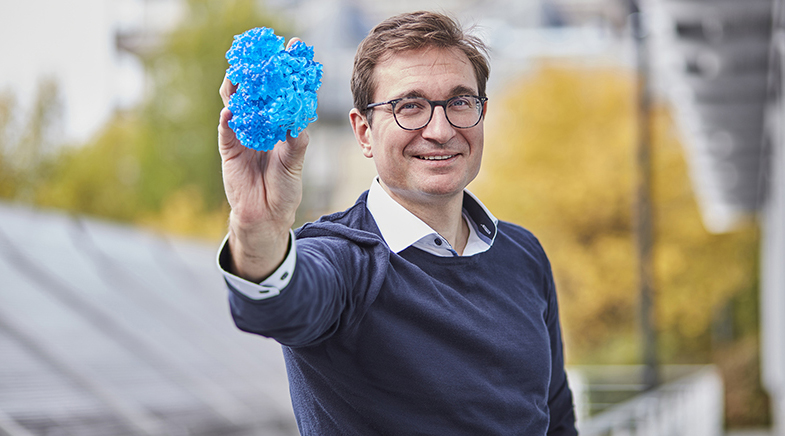Seeing the unseen
-
- from Shaastra :: vol 03 issue 03 :: Apr 2024

Our Cover Story is far-sighted. It captures a trend that is not yet visible: using the eye to diagnose serious diseases.
As a science and technology magazine, Shaastra tries to pick up trends before they become visible to a larger audience. Inchoate research trends are driven by a small number of scientists, who are spread around the world. Shaastra seeks them out actively to connect the dots. And as much as Shaastra is interested in the present, it looks ahead to the future. Even if that future is sometimes years away.
Shaastra's third Cover Story, published in September-October 2021 in digital form (bit.ly/3GC4aXf), did just that by noting that human breath was emerging as a diagnostic tool for several diseases. When we wrote it, the trend was barely visible. We knew that full development of diagnostic methods would take years. The story remains valid even today. More companies have joined the ones we had reported on, and the power of breath as a diagnostic tool is more apparent now to a wider variety of researchers and entrepreneurs than in 2021.
This time, we take a similar look at a phenomenon that may become mainstream only by the end of the decade: using the eye to diagnose serious diseases (The eye is a window to the body). Unlike the story on breath, we are not reporting a completely new trend. Ophthalmologists have known for long that serious diseases leave an imprint on the eye. The health of the optic nerve, seen through a fundoscope, gives clues to problems in the brain. As early as 1990, scientists had linked body health to changes in the pattern of blood vessels in the eye. However, using the eye as a diagnostic tool is yet to become routine practice. A lot of science must be done and technology developed before checking the eyes for general health becomes as regular as a test for blood sugar.
Major technologies are developed first in astronomy and then adapted elsewhere. The eye is now performing a similar function in healthcare.
The second part of the Cover Story (Eye on the future) shows how treatments for eyes run ahead of the rest of the body. The eye is transparent and easily accessible. Like the brain, it shows what is called immune privilege, an evolutionary adaptation to limit immune response during infections, and thus maintain essential functions. In some ways, the eye is like the space sciences of healthcare: major technologies are developed first in astronomy and space missions, and then adapted to other areas. The eye is now performing a similar function in healthcare.
Elsewhere in this issue, London-based Richa Agrawal writes about how quantum sensors are developing capabilities to perform vital functions in the field. In the microworld, quantum mechanics allows certain unusual behaviours not allowed in the macroworld in which we live. For example, atoms show wave-like behaviour. Or a particle or a system can be in multiple states as long it is not measured. These properties can be put to good use in technology, but a quantum system is also delicate and so needs to be isolated from the environment. Researchers are now learning to develop sensors that can bring incredible sensitivity to modern technology.
Quantum sensors are already in the market, but those described in our story (The power of the quantum sensors) are of a special kind. They are part of clocks that lose no more than a second in 13 billion years, or those that can detect slowing down of time due to changes in gravitational strength. As Richa describes it, they provide immense benefits. If we look ahead at 21st-century technology, two leaders are visible now: artificial intelligence, and quantum technologies. Sensors are at the leading edge of quantum technologies.
We have some smaller stories that capture similar trends. Sweta Akundi writes (Helping businesses cope with climate change risks) about the emerging business of predicting climate risk to organisations and companies, often in precise manners that weren't possible so far. T.V. Jayan writes (From red mud to green steel) about a new technology in steel-making that can use up the enormous quantities of waste red mud that have piled up across the world, including in India, while also reducing emissions from steel manufacturing. Our book review looks at a phenomenon in the U.S. that would be of concern to all countries: why students are moving away from STEM fields. The reason, in a broad sense, is relevant to a developing country like India: the economic system does not incentivise them to stay in STEM.
Have a
story idea?
Tell us.
Do you have a recent research paper or an idea for a science/technology-themed article that you'd like to tell us about?
GET IN TOUCH














